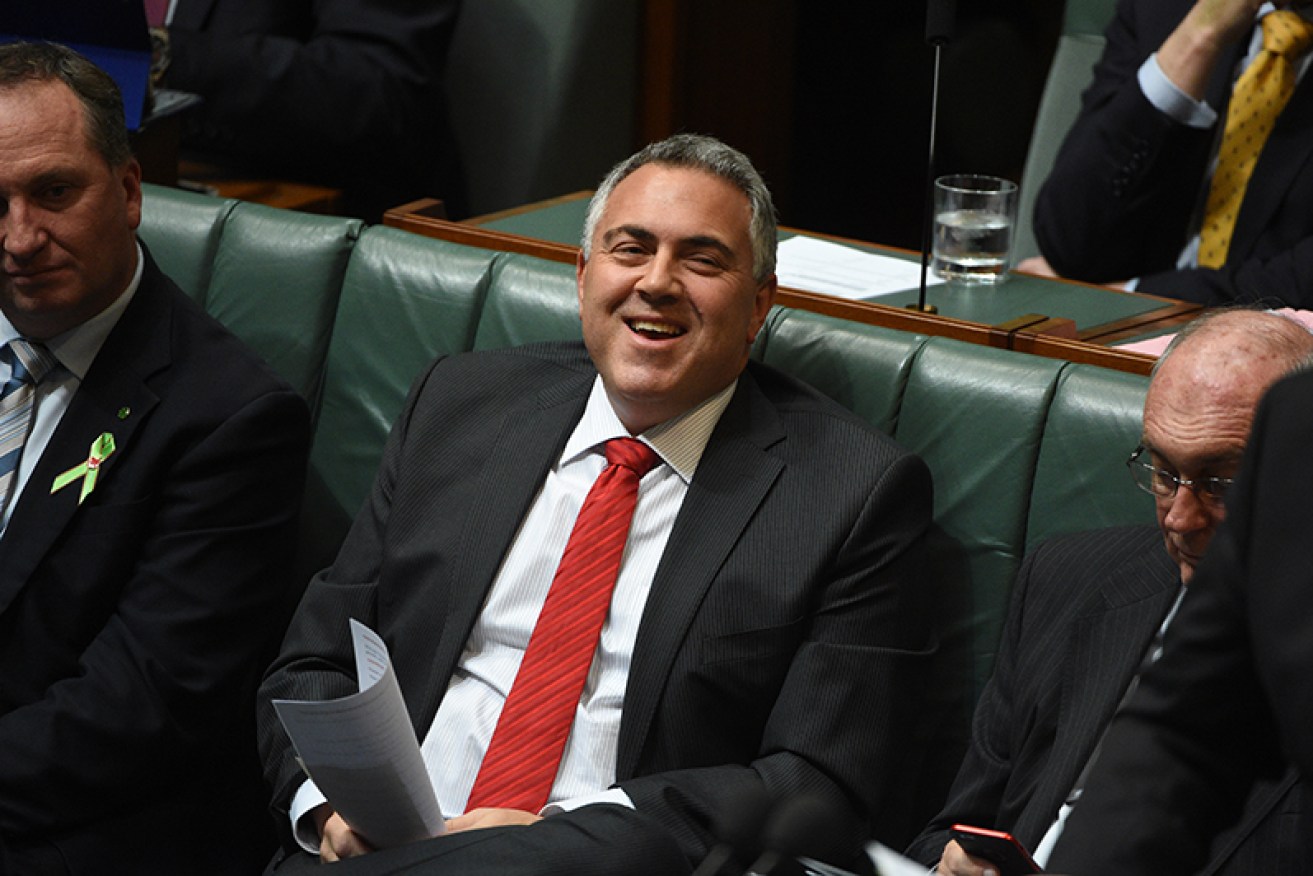Four controversial ways to save the budget


AAP
The government’s ‘path back to surplus’ relies on sneaky, inefficient tax rises and cock-eyed optimism, and things need to change.
That is the central thesis of a new paper by the Grattan Institute.
• Joe Hockey putting Australia at rick: IMF
• We explain the debate over negative gearing
• The meteoric rise of stamp duty explained
The paper, authored by John Daley and Danielle Wood, argues that the government’s budget forecasts are based on hope rather than realism.
“Hope is the key word: over the last six years, outcomes have consistently been worse than these projections,” they write.
Their gripe is that, if the federal budget does indeed return to surplus by 2020, as Treasury projects, it will require an unlikely conspiracy of best-case scenarios in all economic areas.
They point out that Treasury’s 10-year projections for spending growth are considerably lower than the historical 10-year figure in every category but defence (see below).

Source: Grattan Institute
The government, meanwhile, is relying on bracket creep – a sneaky, unfair way of raising taxes – to do most of the heavy lifting.
In short, the government needs revenue, and the Grattan Institute believes it has the solutions. They are:
1. Introduce a broad-based property levy;
2. Broaden the GST;
3. Reduce superannuation tax concessions; and
4. Change capital gains tax and negative gearing.
These four changes would “materially increase government revenue with limited collateral damage to the economy and the most vulnerable in our society”, say the authors.
The recommendations have the advantage of including policies favoured by both the left and the right – opening up an opportunity for bipartisan pragmatism. They are also very similar to recommendations made by the International Monetary Fund in late June, giving them extra credibility.
The Grattan Institute is yet to release the details of each of its four recommendations; however, co-author Danielle Wood gave The New Daily a snapshot of how they would work.
Property levy

A tax on land is the most efficient way of taxing property, says the Grattan Institute.
Under the Grattan Institute’s plan, landowners would pay an annual tax – something like 0.1 per cent – on the value of their land. So if your house is on land worth $200,000, you’d pay $200 a year. If your house was on land worth $2 million, you’d pay $2000 a year. In other words, it taxes people according to their wealth.
Currently, state governments raise their property-based revenue from stamp duty, which is essentially a tax on moving house.
“Over the longer term, you would want to use that revenue [from land tax] to phase out some proportion of stamp duty, because … stamp duty is a really terrible tax,” says Ms Wood.
Broaden GST
The Grattan Institute favours broadening the GST to include health, education and fresh food, but leaving housing out.
Ms Wood also floats the possibility of raising it to 15 per cent – which, by the way, is the lower limit for EU member nations. The UK’s is 20 per cent.
But what about the fairness question – that is, that the GST disproportionately hurts the poor?
“We’d support appropriate compensation arrangements, probably through higher welfare payments,” says Ms Wood.
Super tax concessions
Super tax has been discussed ad nauseum this year, but the Grattan Institute has a bold new approach that will make Labor’s policy look like window dressing. They propose that the concessional contribution cap, which is currently $30,000 a year, be reduced to something closer to $10,000 a year. That is, if you contribute more than $10,000 a year, you will pay 30 per cent tax rather than 15 per cent.

Chris Bowen’s proposal to change super tax concessions is small fry next to what the Grattan Institute is proposing. Photo: AAP
They will also recommend a flat 15 per cent tax on superannuation earnings for retirees. Currently, super investment earnings are tax free for retirees, and the issue is considered so politically sensitive that Labor has only plucked up the courage to propose taxing earnings over $75,000 a year.
Taxing everyone the same (proportionally) would likely be quite unpopular. However, it has the advantage of simplicity, and does not have a particularly onerous effect on any group, as our modelling suggests.
Negative gearing and capital gains tax
Together, negative gearing and capital gains tax concessions make it very attractive to invest in property solely for the capital gains. This is costing the government tax revenue and pushing first-home buyers out of the market.
“Our views are, at the moment these concessions interact is distorting investment choices, and people are using leveraged property investment to reduce taxes on their wage income,” says Ms Wood. “We’re looking at proposals to quarantine negative gearing losses … so you can still write off losses, but not against your wage or salary income.”
This would increase the government’s tax revenue and also, potentially, cool down the housing market.








